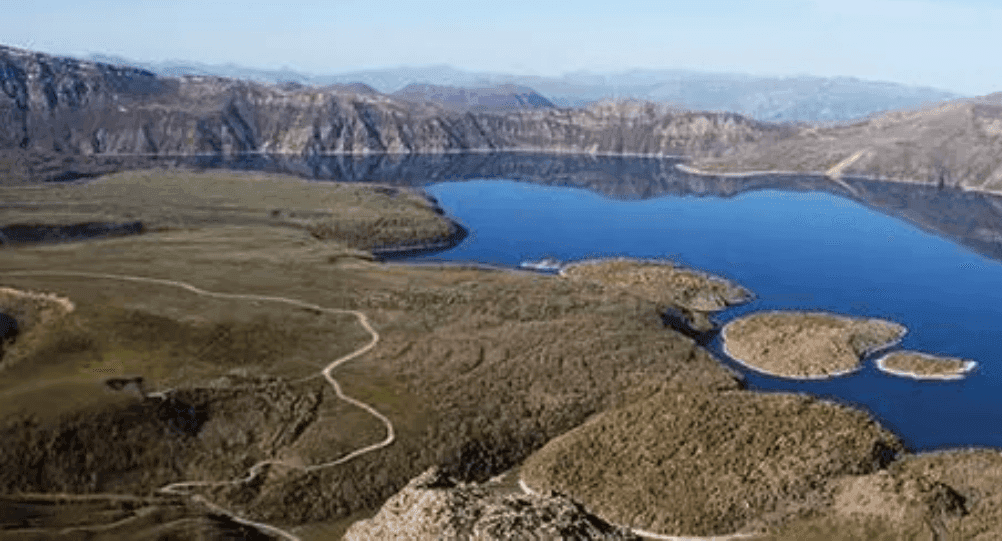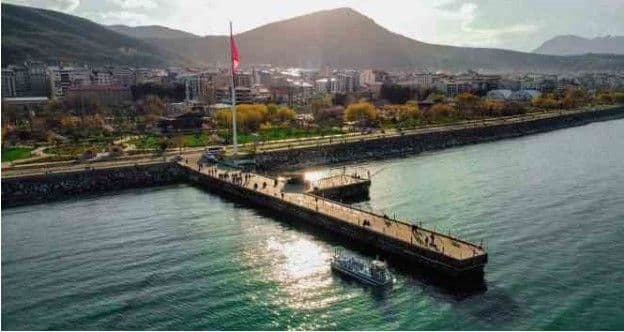At the Summit of a Sleeping Giant: A Night Beneath the Stars on Mount Nemrut
We are at a campsite near the summit of Mount Nemrut, a dormant volcano.
Under a sky filled with countless stars, we spend an evening warmed by the glow of our campfire — followed by a sleepless night at minus five degrees Celsius, and a morning that greets us with one of the most breathtaking views in all of Türkiye: the Nemrut Crater Lake, glittering in the thin mountain air at 2,900 meters above sea level.
A Night Beneath the Stars
It is a pitch-dark night. Our tents stand beside the smaller of Nemrut’s two crater lakes — Ilıgöl (the Warm Lake).
We are surrounded by steep slopes and jagged rocks.
As the crescent moon slowly slips behind the cliffs, the sky belongs entirely to the stars.
Our campfire crackles. Laughter and lively conversation mingle with the night air.
I look around at my friends, sitting in a circle around the flames. The firelight dances across their faces, playing shadow games on the canvas of the night.
Then comes the biting cold. The air freezes.
We retreat to our tents. Sleep won’t come easily. My sleeping bag is not made for such bitter weather, and as the temperature drops below zero, I toss and turn in layers of clothing.
After a restless few hours between waking and dreaming, I crawl out of the tent into a dawn damp with dew.
Our expedition leader catches my eye: “Are you in?” he asks.
“Of course,” I reply. “I love the mountains.”
The Climb to 2,300 Meters — and Beyond
While our friends rest from the previous day’s fatigue, we set off toward the southeastern slope overlooking the lake and begin our ascent.
Our camp sits at 2,300 meters, and we must climb another 500 to 600 meters to reach the summit.
As the sun rises, the chill of the night gives way to warmth.
The light grows brighter, the air thinner.
Sweat replaces the cold as our circulation quickens with every step. We have no water, but excitement drives us forward — the anticipation of reaching the top erases our thirst.
“Alexander’s Paradise”
The slope steepens — nearly 70 percent in places.
The rocks grow sharper as we near the summit.
Carefully avoiding the most dangerous cliffs, we finally reach the peak, where Nemrut Crater Lake spreads below us in a breathtaking panorama.
It is indescribable — a sight one must experience rather than be told about.
As I stand there, memories surface:
Mount Nemrut, a dormant volcano, lies within the boundaries of Tatvan district in Bitlis Province.
This natural wonder is also known as “Alexander’s Paradise”, as it is believed to have been discovered by Alexander the Great during his eastern campaign.
A Natural Monument of Global Significance
The Nemrut Caldera — a vast depression formed by volcanic collapse — ranks first in Türkiye, fourth in Europe, and sixteenth in the world in size.
It is also the second largest caldera in the world containing a lake.
Declared a Natural Monument in 2003, its highest point reaches 2,935 meters, forming an elliptical shape stretching 8.5 km west–east and 7 km north–south.
From where we stand, the Great Lake and Small Lake shimmer below — the caldera’s most striking features.
The smaller lake, Ilıgöl, glows greenish due to its warm, mineral-rich waters, reaching 40°C in winter and up to 60°C in summer.
The Great Lake, covering about 15 square kilometers, fills the western half of the caldera, with cold water plunging to a depth of 155 meters.
An Award-Winning Wonder
In 2010, Nemrut Crater Lake was honored as a “National Destination” in the European Destinations of Excellence (EDEN) competition under the theme “Water-Based Tourism.”
As the sun climbs higher, its rays dance upon the lake’s surface like molten silver.
Descending the mountain, I dream of cooling my tired body in the lake’s waters.
Standing before this magnificent view, my admiration for nature deepens.
After a freezing, sleepless night, I now feel warmth — not from the sun, but from the joy of having reached this peak.
How many times in a lifetime can one stand on a summit like this and watch such beauty unfold?




